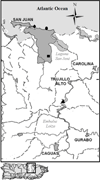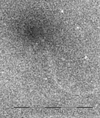Antibiotic-resistance and virulence genes in Enterococcus isolated from tropical recreational waters
- PMID: 23981868
- PMCID: PMC4096248
- DOI: 10.2166/wh.2013.005
Antibiotic-resistance and virulence genes in Enterococcus isolated from tropical recreational waters
Abstract
The prevalence of enterococci harboring tetracycline- and vancomycin-resistance genes, as well as the enterococcal surface protein (esp) has mostly been determined in clinical settings, but their prevalence in tropical recreational waters remains largely unknown. The present study determined the prevalence of tetM (tetracycline-resistance), vanA and vanB (vancomycin-resistance) in the bacterial and viral fractions, enterococci and their induced phages isolated from tropical recreational marine and fresh waters, dry and wet sands. Since lysogenic phages can act as vectors for antibiotic-resistance and virulence factors, the prevalence of the mentioned genes, as well as that of an integrase-encoding gene (int) specific for Enterococcus faecalis phages was determined. Up to 60 and 54% of the bacterial fractions and enterococci, respectively, harbored at least one of the tested genes suggesting that bacteria in tropical environments may be reservoirs of antibiotic-resistance and virulence genes. int was detected in the viral fractions and in one Enterococcus isolate after induction. This study presents the opportunity to determine if the presence of bacteria harboring antibiotic-resistance and virulence genes in tropical recreational waters represents a threat to public health.
Figures


References
-
- Agerso Y, Pedersen AG, et al. Identification of Tn5397-like and Tn916-like transposons and diversity of the tetracycline resistance gene tet(M) in enterococci from humans, pigs and poultry. J Antimicrob Chemother. 2006;57(5):832–839. - PubMed
-
- Ahmed W, Stewart J, et al. Evaluation of the host-specificity and prevalence of enterococci surface protein (esp) marker in sewage and its application for sourcing human fecal pollution. J Environ Qual. 2008;37(4):1583–1588. - PubMed
-
- Bager F, Madsen M, et al. Avoparcin used as a growth promoter is associated with the occurrence of vancomycin-resistant Enterococcus faecium on Danish poultry and pig farms. Prev Vet Med. 1997;31(1–2):95–112. - PubMed
Publication types
MeSH terms
Substances
Grants and funding
LinkOut - more resources
Full Text Sources
Other Literature Sources
Molecular Biology Databases

